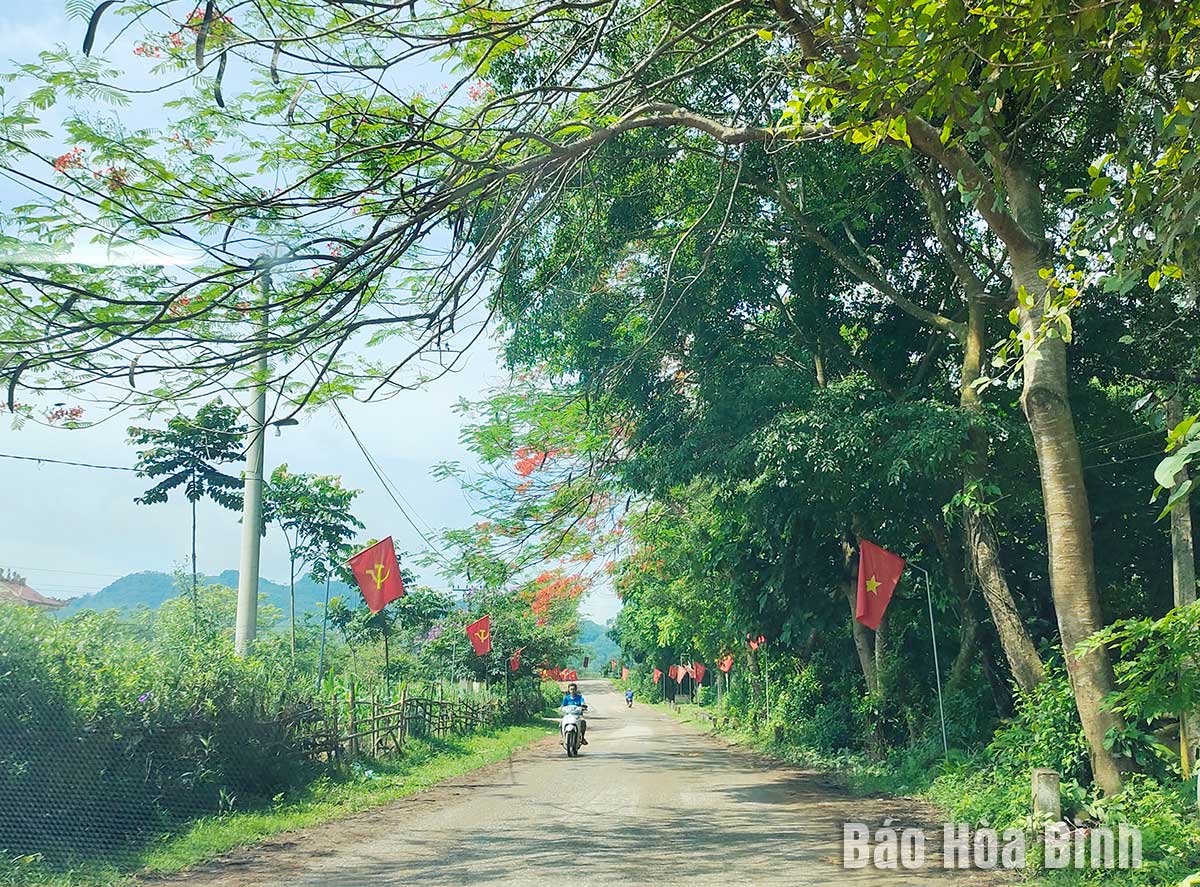
According to the Department of Agriculture and Rural Development, the total resources mobilized to implement the National Target Program on building new rural areas from 2021 to 2025 in the province is expected to be 25,000 billion VND.

The program of building new rural areas has changed the appearance of many rural
areas in the province. The photo was taken in Tu Ly commune (Da Bac).
Accordingly, the directly-supported capital from the central budget to
implementthe program is about 723 billion dongs; the integrated capital
sources from the National Target Programs for the socio-economic development of
the ethnic and mountainous
minorities, the sustainable poverty reduction in the period of 2021-2025 and other projectsbeing implementedin the
rural areas of the province is approximately 1,810 billion dongs; the capital
from the local budget is 854 billion VND; the credit capital (lent by banks for
the development and production) is about 19,600 billion dongs; the enterprise
capital is about 1,000 billion dongs. In addition, the mobilized capital from
the voluntary contribution by the people
and communities is about 1,063 billion dongs.
In the period of 2021-2025, Hoa Binh province has set the target that the rate of the communes meeting the new rural standard reaches over 70%; The rate of the advanced new rural communes reaches 26.4%;
The rate of the model new
rural communes reaches 6.2%; 50% of the district-level
units meet the new rural standard or complete the task of building new rural
areas. Additionally, the
whole province is trying to
have at least one district meeting the standards of the advanced new rural. On average, the
communes in the province
achieve 17.0 criteria per commune; standardizing
80 OCOP products at the provincial level or more.
Hoa Binh province is undergoing a dynamic transformation amid Vietnam’s national digital transition. Building on Poliburo’s Resolution No. 57-NQ/TW on breakthroughs in science, technology, innovation, and national digital transformation, the province has rolled out a wide range of practical action plans. A standout initiative is the "Digital Literacy for All” movement, an effort to ensure that no one is left behind in the digital era.
Hoa Binh province is undergoing a dynamic transformation in the wake of the national digital transformation movement. Building on Resolution No. 57-NQ/TW of the Politburo on breakthroughs in science, technology, innovation, and national digital transformation, the province has implemented a wide range of practical action plans. A standout initiative is the "Digital Literacy for All” movement ambitious effort to ensure that no one is left behind in the digital age.
With a spirit of unity and proactive problem-solving, the Party Committee, the government and the people of Dong Lai Commune (Tan Lac District) have made great strides in implementing the resolutions of the 24th Party Congress of the commune for the 2020 - 2025 term. Focusing on leadership and practical actions, the commune has brought the Party’s resolutions into daily life, creating strong impacts and pushing the local development forward.
Amid the nationwide push for digital transformation, young people in Hoa Binh Province are stepping up as dynamic pioneers, applying technology to enhance Youth Union operations and expand the reach of youth-led initiatives. Through creativity and adaptability, Youth Union organizations at all levels have introduced a series of practical solutions, contributing to modern governance and community development.
In recent years, An Nghia commune, located in Lac Son district, has stepped up administrative reform, focusing on improving the quality and efficiency of its single-window service unit for receiving and processing administrative procedures. These improvements have helped create favourable conditions for local residents and organisations to handle administrative procedures, contributing to the commune’s broader socio-economic development.
The Prime Minister-approved master plan to develop the multi-use value of forests ecosystems through 2030, with a vision to 2050, aims to improve the management and sustainable use of forest resources, create jobs, increase incomes, and improve the living standards of ethnic minorities, people in mountainous and remote areas, forest workers and those living near forests.



